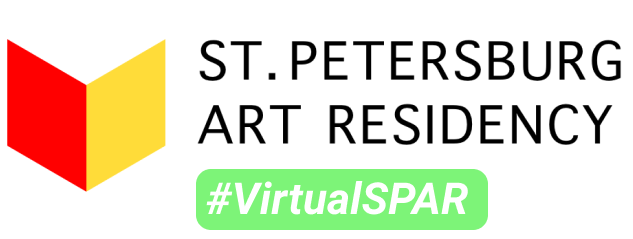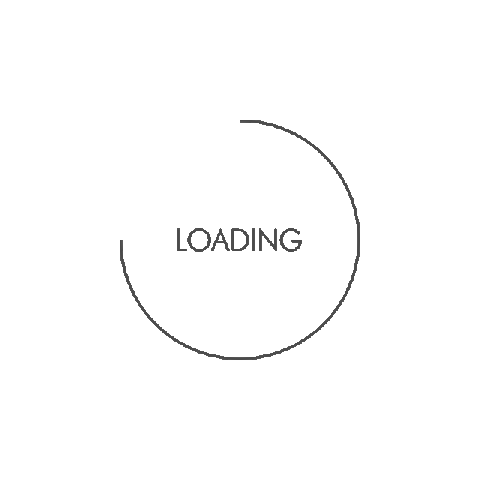Throbbers, Peter Shenai, London
A “throbber” is an animated graphic that pulsates, rotates, meanders – or lives by some other means, in order to speak on behalf of the machine and say
I’m just thinking. Soon, you’ll have what you want.
For me the quintessential throbber is the “spinning pin wheel of doom” which was so dominant in Mac User interfaces through the 00s.
There are an uncountable number of variations on this theme, each with an entirely different visual rhetoric and no “essential” lowest common visual factor. And yet they all say exactly the same thing. “Just a minute!”
On the surface, surely these things are utterly trivial. Banal. In fact, to the point that surely it’s ridiculous i’m even giving them this thought, this air time? But I think that’s the whole point. They have snuck in under our noses, and have come to dominate so much of our lives without us noticing. The throbber is a rotating trojan horse, a meek assassin who has already stolen so much of our time and attention. I bet no one wants me to ask the question:

How much time have you spent, in total, staring at one of these things. Wondering: “urrrrgh why won’t it load”??
On the one hand, aren’t throbbers inevitable, or at least, helpful? Who wants to live in a Kafka-esque hell where “processing” is always concealed? Isn’t at least courteous and reassuring to know that “stuff” is happening? Yes. But. Throbbers are acting on us. They are part of the machinery of “on demand” work and entertainment. They are the catalyst to our fracturing attention spans, and they foster in us an unparalleled impatience for THE CONTENT.

I meditate. Not well, but well enough. I began to meditate because my attention span and my anxiety were getting worse. Apps helped me to meditate. Now, I have a much better relationship to my anxiety and my concentration. Surely, this is a fairytale with a happy ending? Yes, but I wonder why this story had to have a beginning…

I wonder: perhaps the market explosion in “mindfulness products” reflects a deeper narrative with dire implications: maybe, once upon a time we had a humble everyday state of mindfulness, which was an unintended by-product of waiting patiently. We didn’t need to name it anything. It just was part of the flow of life. It was boring, humorous, surprising, unremarkable, tedious…. It was organically distributed across our days and it came to the fore in the interstitial moments when things pause, when we are waiting, when we are merely checking in with the world. Then came along on-demand machinery, which saw this time as a market to be exploited. This campaign to colonise our attention was largely successful (now if you wait in a cafe you are on your phone as a default). But when the machinery couldn’t perform, designers needed ways to hold our attention captive, giving us a cornucopia of rotating promises, which cast on us the spell of impatience. Under this spell, we forget our surroundings, we stare at the screen. All that we feel is impatience and irritation. And once the moment has passed, once THE PROMISED CONTENT has re-loaded, all is forgotten.
So: I want to invite you to come on a little artistic experiment with me. I am fascinated by throbbers because I think they currently operate – whether by design or by accident – as tools for anti-mindfulness. So I want to see what happens if we turn them on their heads. I want to treat them as the focus of mindful awareness.

Look at one of these throbbers. Stare at at it. Meditate.
See it for what it is: yet another actual piece of content, with an absolutely extraordinary phenomenological existence. See how it plays with your vision. See how it reflects something incredible about our relation to time, to movement, to light. See how it creates multiple visual illusions. See how there is a whole drama unfolding right here, right now.
Let’s try this – it’ll take 2+ min.
- Move the screen so the whole throbber below is in view.
- Start a clock for at least 2 min. (I tried 5min). Close your eyes.
- Breathe 4 times. In through your nose, and out through your mouth (4x each). Go slowly. Establish a slow rhythm.
- Then, open your eyes and watch. Don’t look elsewhere. See what you can notice. Just watch until the time’s up.
My notes on meditating on this throbber for 5 min on 24/02/21
- I immediately felt weird and impatient.
- But, after maybe 30s/1m I had all kinds of visual illusions going on: the more I stared at the white space, the more that it seemed to have a bulky presence.
- The white “circle” in the middle started to feel like quite a massive sphere, around which all the action was taking place
- A lot of the screen started to kind of look like it was dissolving into a white soup, with only the black rotating aspect remaining.
- I came to feel quite calm and centred
- After 5 min the screen automatically went blank on my computer and I missed the throbber. I wanted it back again.
How did it feel for you? Comment if you’d like!
I think I’d like to experiment with taking this idea to preposterous extremes. Perhaps I should make throbbers in large format lightboxes/projections. Or I should slow them down. Maybe I should curate mindful journeys where you stare at each for one minute, until you’ve spent an hour staring in total. Maybe they should blend into onanother in a single looping video.
I want to create environments – on your computer screen, in the gallery, wherever – where people are invited to stare into these things, in the same way that Rothko invites you stare into his “voids”. I wonder, I just wonder, whether over time, this could impact on our encounters with throbbers. Could this help us to “catch ourselves” in the act of impatience, out there in the world?
You Might Also Like:
Van Luong (1)
 Kjell Zillen (4)
Kjell Zillen (4) Mels Dees (9)
Mels Dees (9) Gao Yu (4)
Gao Yu (4)Katya Lebedev (1)
Juan Dies (1)
 Anastasia Prahova (2)
Anastasia Prahova (2)Nena Nastasiya (7)
Taarn Scott (6)
 Cynthia Fusillo (20)
Cynthia Fusillo (20)Roberta Orlando (8)
 Nanda Raemansky (25)
Nanda Raemansky (25) Eliane Velozo (22)
Eliane Velozo (22)Leyya Mona Tawil (1)
Julia Dubovyk (2)
Jianglong (2)
 Iara Abreu (23)
Iara Abreu (23) Agathe Simon (1)
Agathe Simon (1)Rosetta Allan (1)
Elizaveta Ostapenko (5)
 Valentin Boiangiu (2)
Valentin Boiangiu (2) Wesley John Fourie (9)
Wesley John Fourie (9) Renato Roque (3)
Renato Roque (3)Rosa Gauditano (5)
Neerajj Mittra (34)
Ciana Fitzgerald (5)
Boris Moz (3)
 Katerina Muravuova (5)
Katerina Muravuova (5)Kyla Bernberg (1)
 Muyuan He (1)
Muyuan He (1)Liza Odinokikh (2)
 Amalia Gil-Merino (2)
Amalia Gil-Merino (2)Paulo Carvalho Ferreira (6)
 Anastasiia Komissarova (2)
Anastasiia Komissarova (2) Yumiko Ono (1)
Yumiko Ono (1) Stefania Smolkina (1)
Stefania Smolkina (1)Lena Adasheva (1)
 Zahar Al-Dabbagh (1)
Zahar Al-Dabbagh (1) Emily Orzech (6)
Emily Orzech (6) Fernanda Olivares (5)
Fernanda Olivares (5) Noor van der Brugge (3)
Noor van der Brugge (3) Ira Papadopoulou (2)
Ira Papadopoulou (2) Tom Chambers (8)
Tom Chambers (8) Titi Gutierrez (3)
Titi Gutierrez (3) Franz Wanner (2)
Franz Wanner (2) Crystal Marshall (6)
Crystal Marshall (6) Transpositions III (36)
Transpositions III (36) Riddhi Patel (3)
Riddhi Patel (3) Michele Kishita (2)
Michele Kishita (2)Damian Carlton (4)
 Deanna Sirlin (1)
Deanna Sirlin (1) Laura Salerno (3)
Laura Salerno (3) Nina Annabelle Märkl (12)
Nina Annabelle Märkl (12) Elina Fattakhova (1)
Elina Fattakhova (1) Tasha Hurley (1)
Tasha Hurley (1) Ian Hartley (2)
Ian Hartley (2) Laurence de Valmy (2)
Laurence de Valmy (2) Ilia Bouslakov (5)
Ilia Bouslakov (5) Andrea Ahuactzin Pintos (4)
Andrea Ahuactzin Pintos (4) Sveta Nosova (3)
Sveta Nosova (3)Carlos Carvalho (1)
 Maria Timofeeva (1)
Maria Timofeeva (1) Jinn Bug (2)
Jinn Bug (2) Johannes Gerard (3)
Johannes Gerard (3)Irène Mélix (1)
 Aba Lluch Dalena (3)
Aba Lluch Dalena (3) Fabian Reimann (1)
Fabian Reimann (1)Natalia Gourova (1)
 Kate Finkelstein (4)
Kate Finkelstein (4)Raina Greifer (1)
James McCann (2)
Naza del Rosal Ortiz (1)
 Jay Critchley Jay Critchley (1)
Jay Critchley Jay Critchley (1) Vicky Clarke (4)
Vicky Clarke (4) Maria Silva (4)
Maria Silva (4) Shir Cohen (5)
Shir Cohen (5) Peter Shenai (4)
Peter Shenai (4) Bo Choy (4)
Bo Choy (4)Alina Orlov (2)
 Olga Popova (3)
Olga Popova (3) Coco Spencer (2)
Coco Spencer (2) Filippo Fabbri (2)
Filippo Fabbri (2)Daniele Leonardo (5)
 SISTERS HOPE (1)
SISTERS HOPE (1) Scenocosme : Gregory Lasserre & Anais met den Ancxt (4)
Scenocosme : Gregory Lasserre & Anais met den Ancxt (4) Anne Fehres & Luke Conroy (6)
Anne Fehres & Luke Conroy (6) Olesya Ilenok (2)
Olesya Ilenok (2) Marie-Eve Levasseur (4)
Marie-Eve Levasseur (4) Natalia Tikhonova (2)
Natalia Tikhonova (2)Ildar Iakubov (1)
 Evgeniy Lukuta (7)
Evgeniy Lukuta (7) Jarkko Räsänen (5)
Jarkko Räsänen (5)Maria Guta (6)
Egle Kulbokaite Dorota Gaweda (6)
Thomas Kotik (1)
 Andrea Stanislav (3)
Andrea Stanislav (3)Ludmila Belova (1)
Alena Levina (1)
 Ilia Symphocat (2)
Ilia Symphocat (2)Yevgeniy Fiks (1)
Star Smart(Formerly Trauth) (18)
Jyoti Arvey (1)
Les Joynes (2)
 Ekaterina Ivanova (1)
Ekaterina Ivanova (1) Lev Shusharichev (1)
Lev Shusharichev (1)Michael Stebackov (5)
Ryan Griffith (3)
Lidia Gordeenko (3)
 Masha Danilovskaya (7)
Masha Danilovskaya (7) Irina Korotkaya (2)
Irina Korotkaya (2) WagtailFilms Oksana Bronevitskaia&Dmitry Zhukov (5)
WagtailFilms Oksana Bronevitskaia&Dmitry Zhukov (5)Kostya Diachkov (1)
Elena Sokolova (3)
Alexander Nikolsky (2)
















